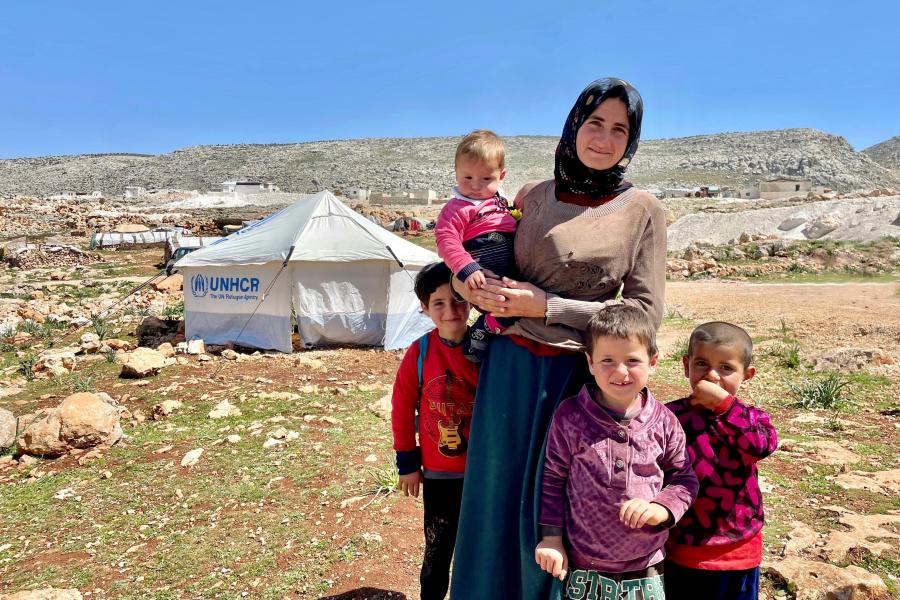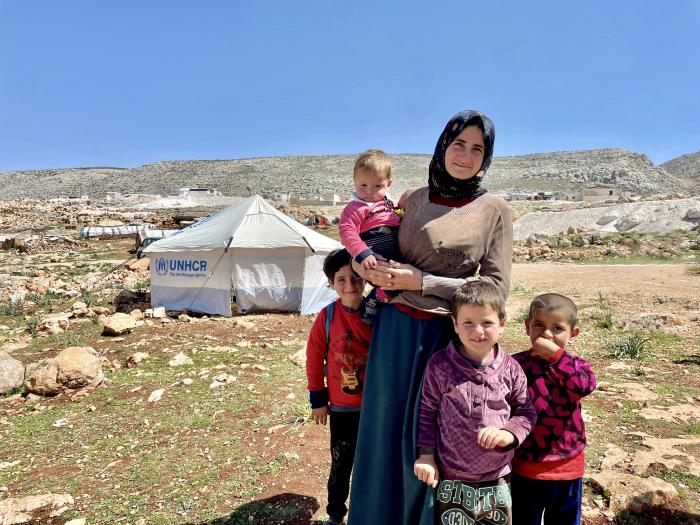As of December 2024, there has been a fundamental shift in the situation in Syria. The situation remains dynamic and volatile. Despite challenges, the UNHCR cross-border operation in north-west Syria is fully functional. Recent hostilities have caused further damage to civilian infrastructure and humanitarian assets, adding to humanitarian needs in a country where more than 16 million people already required humanitarian assistance. For the latest updates, please refer to the operational updates published on this page or visit the Middle East and North Africa regional page.
Strategy 2025
After 14 years of conflict, conditions in north-west Syria have continued to deteriorate owing to ongoing hostilities, a worsening economic crisis, and the impacts of the February 2023 earthquakes. North-west Syria’s population of 5.1 million, with 4.2 million in need of assistance, grapples with insecurity, displacement, deteriorating economic conditions, including severe inflation and loss of livelihoods, and food shortages. Almost 2 million internally displaced people reside in precarious conditions in over 1,500 camps or self-settled sites that lack reliable access to electricity, clean water and other basic services. Approximately 800,000 individuals continue to live in tents, some enduring multiple years in the same shelter. Women and children (comprising 80 per cent of the IDP population), and nearly 90,000 persons with disabilities are disproportionately affected.
Since 2014, following the adoption of UN Security Council Resolution 2165, UNHCR and other UN agencies have been delivering cross-border activities from Gaziantep, Türkiye, to address humanitarian needs in non-government controlled areas of northern Syria. However, following the non-renewal of the Security Council resolution in July 2023, UN agencies relied on the consent of the Syrian government and the de facto authorities to continue delivering assistance and accessing north-west Syria through three border crossings (Bab al-Hawa, Bab al-Salaam and Al Ra’ee). The cross-border operation remains a lifeline, reaching millions of people each month with aid and protection services. Following the February 2023 earthquakes, UNHCR staff gained unprecedented access to north-west Syria which allowed UNHCR to directly assess needs, monitor projects, and engage with the local population.
UNHCR’s vision for 2025 is that IDPs and host communities in north-west Syria can enjoy a dignified, safe environment which allows them to realize their rights and meet their essential needs. To achieve this vision, UNHCR will deliver life-saving humanitarian assistance, including dignified shelter solutions, core-relief items, cash-based interventions, and community-based and focused protection and legal services; empower communities to identify prevention and response strategies while enhancing accountability to affected populations; strengthen partner capacities; and maintain leadership of the Protection, Shelter/NFI, and Camp Coordination and Camp Management (CCCM) clusters.
Populations
Population types
Financials
Budget and expenditure trends
Budget by Impact Area | 2025
Protect: Attaining favorable protection environments
Respond: Realizing rights in safe environments
Budget by Outcome and Enabling Area | 2025
The activities that UNHCR plans and undertakes around the world are described under "Outcome Areas". The support and management functions needed to run UNHCR’s programmes and improve efficiency and effectiveness are covered by "Enabling Areas".
One year after the earthquakes
One year has passed since a devastating 7.8 magnitude earthquake struck Türkiye and Syria on 6 February, unleashing nearly 14,000 aftershocks. It was one of the most devastating natural disasters in the region, impacting around 8.8 million people in Syria. Some 6,000 deaths and more than 12,000 injuries were reported in the whole of Syria.










